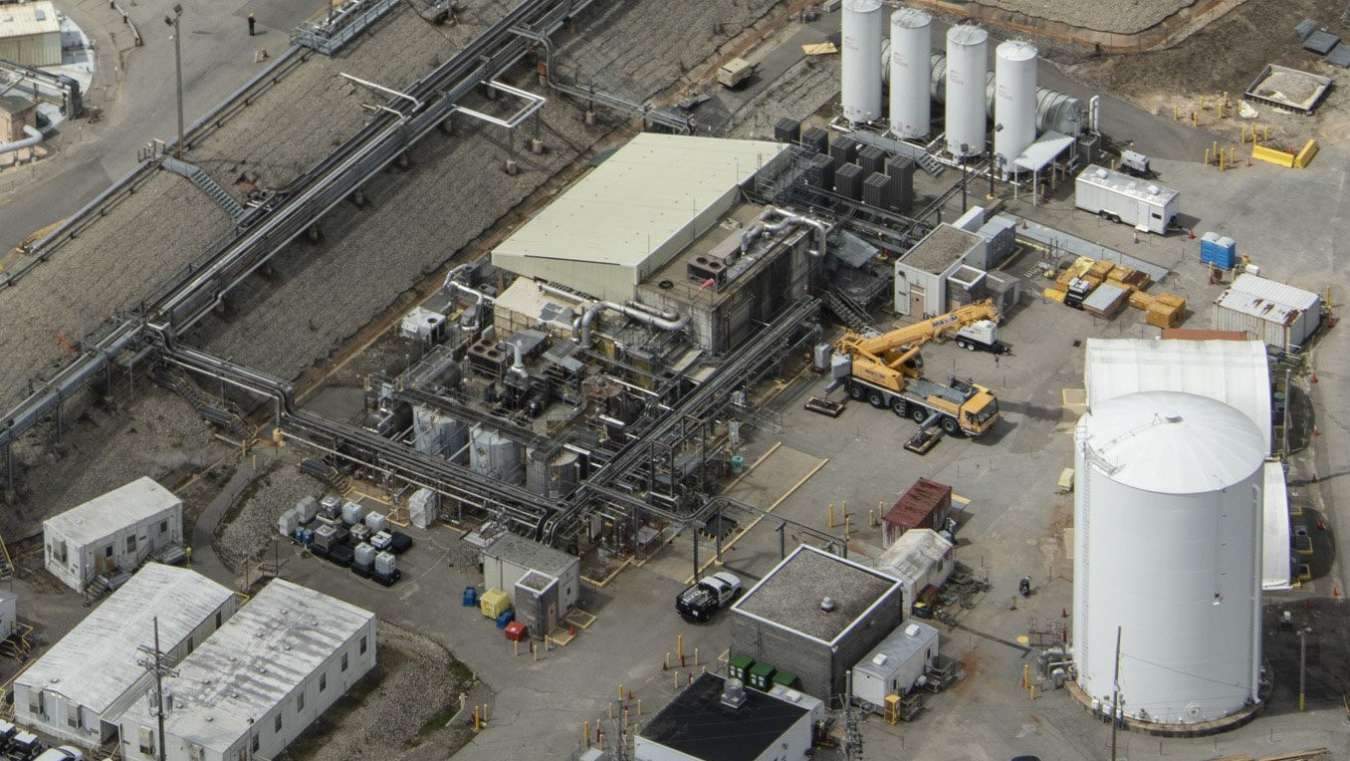AIKEN, S.C. (Aug. 13, 2019) – The U.S. Department of Energy’s Office of Environmental Management (EM) Savannah River Site (SRS) and Savannah River...
August 13, 2019AIKEN, S.C. (Aug. 13, 2019) – The U.S. Department of Energy’s Office of Environmental Management (EM) Savannah River Site (SRS) and Savannah River Remediation (SRR), the liquid waste contractor at SRS, have ended a successful 11-year demonstration of two interim salt waste processing facilities as crews prepare for startup of a new facility to replace them at SRS.
The pioneering work of the Actinide Removal Process (ARP) and Modular Caustic Side Solvent Extraction Unit (MCU) demonstration advanced radioactive salt waste processing across the EM complex by improving the technology to be used in the larger-scale Salt Waste Processing Facility (SWPF).
ARP/MCU helped EM avoid an interruption in liquid waste operations — including closure of high-level waste (HLW) tanks and vitrification of HLW at the Defense Waste Processing Facility (DWPF) — due to a lack of tank space by providing salt waste treatment capabilities while SWPF was being constructed.
"For more than a decade, this demonstration project has proved invaluable for the operation of SWPF and allowed for the uninterrupted operation of the liquid waste mission," DOE-Savannah River Manager Michael Budney said.
ARP/MCU enabled EM to process 7.4 million gallons of radioactive salt waste, resulting in 1,827 canisters of vitrified waste and 15 million gallons of grout safe for permanent disposal. The ARP/MCU process facilitated the closure of six HLW tanks.
"It has been a tremendous and rare privilege to be part of a first-of-its-kind project over its entire lifecycle, working with great people, including the DOE and regulators," said Brent Gifford, project manager at Savannah River Remediation (SRR), EM's liquid waste contractor at SRS. "The success of the ARP/MCU processes validated the technology that will be used by SWPF and enabled SRS to continue to empty waste tanks, and treat and safely dispose of radioactive waste in support of DOE’s plans for cleanup and tank closure."
The waste transfer lines that fed the MCU facility are being rerouted to the estimated 140,000-square-foot SWPF, which has a significantly greater processing capacity than ARP/MCU. SWPF also will produce a much larger stream of decontaminated salt waste than those facilities.
ARP/MCU was designed to reduce waste contamination by a factor of 12, meaning the waste leaving MCU would contain only 1/12th of the contamination as when it entered the system. A next generation solvent specially engineered to remove more cesium was developed by Oak Ridge National Laboratory and implemented in 2013 by SRR and EM's Savannah River National Laboratory. This improvement reduced contamination by a factor of approximately 60,000 in MCU, meaning the waste leaving MCU would contain only 1/60,000th of the contamination as when it entered the system.
"ARP/MCU has far exceeded everyone’s expectations," said Tom Foster, SRR president and project manager. "It not only allowed us to set the stage for SWPF operations but also to continue to reduce and mitigate one of the greatest environmental risks in the state of South Carolina — a true win-win."

After 11 years of removing cesium, strontium, and actinides from radioactive salt waste at the Savannah River Site, the Actinide Removal Process and Modular Caustic Side Solvent Extraction Unit facilities have completed their mission.

